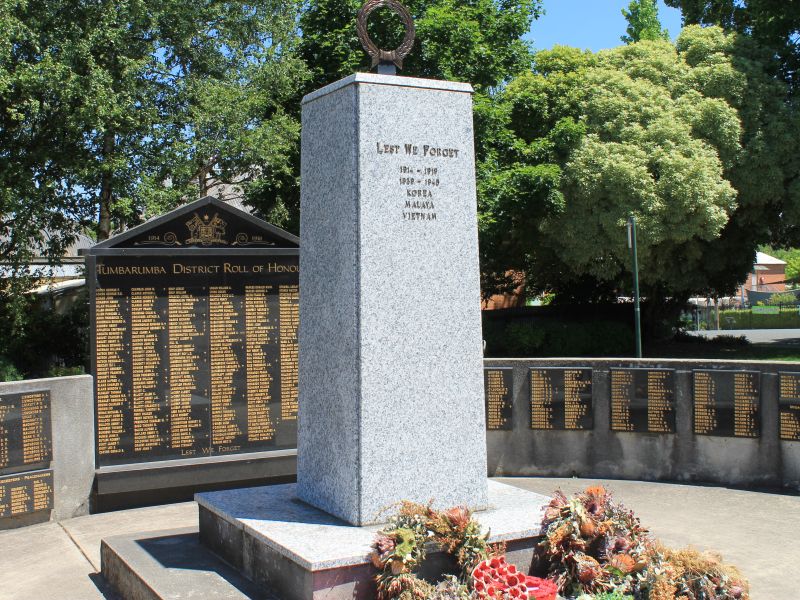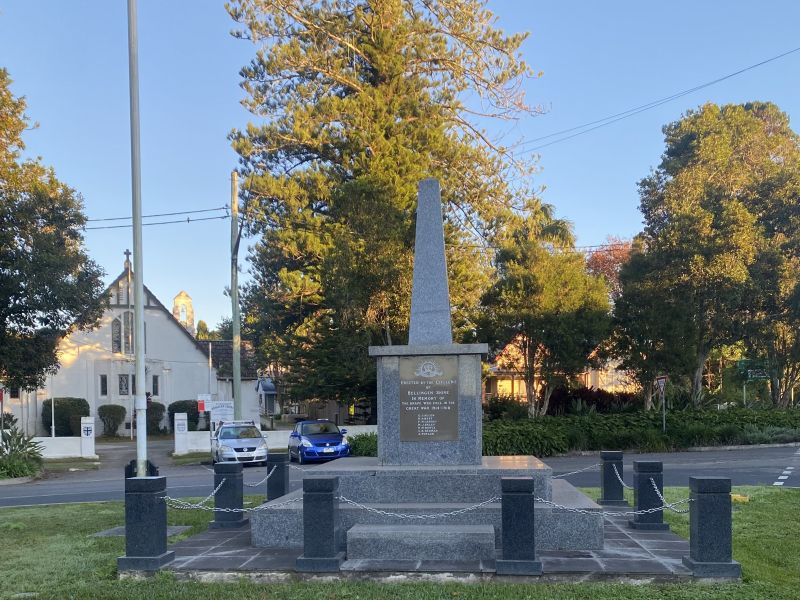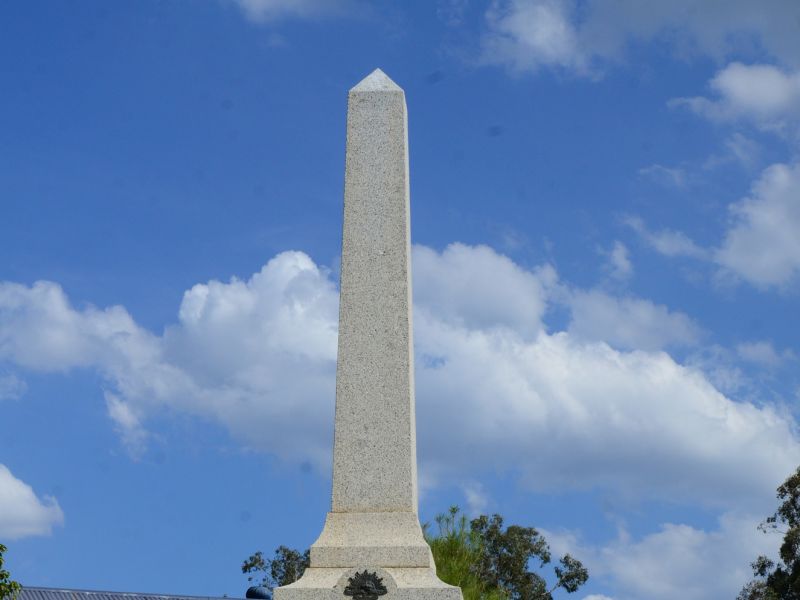John Mocatta
John Norman Mocatta was born on the 22nd of October, 1890, in his home in Miller Street, South Shore, NSW. His father, George Voss, was a 30-year-old railway engineer while his mother, Emeline Mary Gertrude (née Hollingdale), was 33. He would be one of seven children (four boys and three girls), although his youngest sibling, Lawrence, would die when he was only three months old.
John became involved in farming and grazing in the Upper Murray region. The Monday, September the 29th, 1913 edition of the Mudgee Guardian and North-Western Representative makes mention of John being in the district for two or three weeks purchasing cattle for his Gregg Gregg property. Apparently, he trucked 300 head at Craboon, consigned to Mt Horeb where they were to be driven overland to his property. Tragedy would strike the Gregg Gregg property when, in November of 1918, the homestead burned to the ground. Fortunately, according to the Corryong Courier of November 7th of that year, no one was home at the time.
At the time of enlistment, John was a single, 22-year-old grazier. He enlisted at Liverpool NSW on the 30th of September 1914, was given the regimental number 301 and was put on strength with B Squadron of the 6th Light Horse. John’s enlistment papers provide us with a description of him; standing at 158 cm tall, he weighed 68 kg, had blue eyes, fair hair, and a fair complexion. As well as vaccination marks on his arm he also had a scar on his head. He gave his religious denomination as Roman Catholic.
On the 21st of December, John embarked on HMAT A29 Suevic in Sydney, New South Wales. The troop convoy would collect ships in Melbourne, Adelaide, and Albany as it sailed its way around the south coast of Australia and on toward Egypt. After a period of training and consolidation in Egypt, the 6th Light Horse, minus their horses, embarked on HMT Lutzow and proceeded to join the MEF (Mediterranean Expeditionary Force) at Gallipoli on the 15th of May, 1915.
The 6th Light Horse was attached to the 1st Division on Gallipoli and was made responsible for the defence of the right flank of the ANZAC position. During their time they fought mainly defensive actions around the Anzac Cove beachhead until being withdrawn in December 1915, as part of the overall evacuation from the peninsula.
The consistently poor diet, lack of clean water, and the constant presence of dead and decaying bodies resulted in a significantly large number of men becoming sick with dysentery. On the 2nd of September, John was admitted to the 1st Casualty Clearing Station sick with diarrhoea. He was then sent along to a number of Clearing Stations before embarking on HMHS Neuralia and being sent to Malta.
The Neuralia played an important part in the rescue of personnel from the first Australian transport sunk by a U-boat in World War 1. The SS Southland was carrying members of the 21st Battalion, B Company of the 23rd Battalion, the 6th Field Artillery Brigade as well as the 2nd Division Staff from Egypt to Gallipoli when it was torpedoed by the German submarine UB14. The Neuralia stopped engines (a risky thing to do in the presence of an enemy submarine) and picked up personnel, including General Legge, the commander of the 2nd Division.
John’s condition was seen as significantly serious enough for him to be sent to a hospital in England and on the 3rd of November he embarked for England on board the Regina D’Italia. It would be nearly five months before he would rejoin the 2nd Light Horse Regiment in Tel-el-Kebir, Egypt.
Recurring illnesses would see John in and out of hospitals at Tel-el-Kebir and Heliopolis for the next month before rejoining his regiment on the 13th of May, 1916. On the 14th of September of that same year, John decided to transfer to an Infantry unit, the 54th Battalion, at Moascar. He embarked on the transport Nile at Alexandria on the 21st of that month and arrived in England about one week later. He would spend a short period of time with the 14th Training Battalion, becoming used to the different forms of warfare he would encounter on the Western Front.
On the 13th of November, he proceeded on the SS Onward to land in France and joined his new unit in Etaples on the 8th of December. In late January he was admitted to the 1st Anzac Rest Station with scabies, spending approximately a week resting up. The 5th of February, 1917, found him rejoining the 54th Battalion as they held the front line in the Trones Wood sector, approximately 5 kilometres east of Pozieres. John was with his battalion in the firing line for less than one month when he was seized with cerebral spinal meningitis. He was brought into a Field Casualty Clearing Station where he died soon after. He was buried in the nearby Puchevillers British Cemetery, France, with the Revd. E.J. Collins presiding over the burial.
In 1917, George and Emily wrote a letter to the Australian Red Cross Society in London, asking if they were able to provide more details on John’s death. Originally established by Vera Deakin, the daughter of former Prime Minister Alfred Deakin, the Bureau was established to assist Australian families to find information about the details surrounding the notification of death they had received about their family members. George and Emily received the following reply;
“Died”
This man was admitted to the C.C.S. 1.3.17. Suffering from Cerebro spinal meningitis. He was dangerously ill at the time of admission and unconscious. He never regained consciousness and passed away quite peacefully at 3.30 p.m. on 3.3.17. He was buried in the local Military Cemetery on the following day 4.3.17.
Cert. by letter from The Officer Commanding
2/1st S. Midland C.C. Stn.
B.E.F.
7.4.17
An article in the Monday, the 9th of April 1917, edition of the Sydney Morning Herald provides a brief overview of John's passing.
“DIED OF ILLNESS
PRIVATE J. N. MOCATTA
Private John Norman Mocatta was reported as having died of cerebral spinal meningitis on March 6 at a clearing hospital in England. He was 25 years of age, and a son of Mr G.F. Mocatta, a railway engineer, and a nephew of Mr W.H. Mocatta, barrister of Sydney. He served five months at Gallipoli, being slightly wounded there. After seven months in a hospital in England, he was sent to Egypt on light duties, whence he volunteered to serve in an infantry regiment in France, and served there for five months. He was well known on the Bellinger River, and on the Upper Murray River, where he was engaged in pastoral pursuits.”
John is also remembered at the Australian War Memorial Roll of Honour, the Belligen War Memorial, the Northbridge (Shore) Sydney Church of England Grammar School Memorial Cricket Ground Roll of Honour, the Tumbarumba District Roll of Honour WW1 and the Corryong War Memorial. For his service, he was awarded the 1914-1915 Star, the British War Medal and the Victory Medal.
 Stephen Learmonth
Stephen Learmonth

